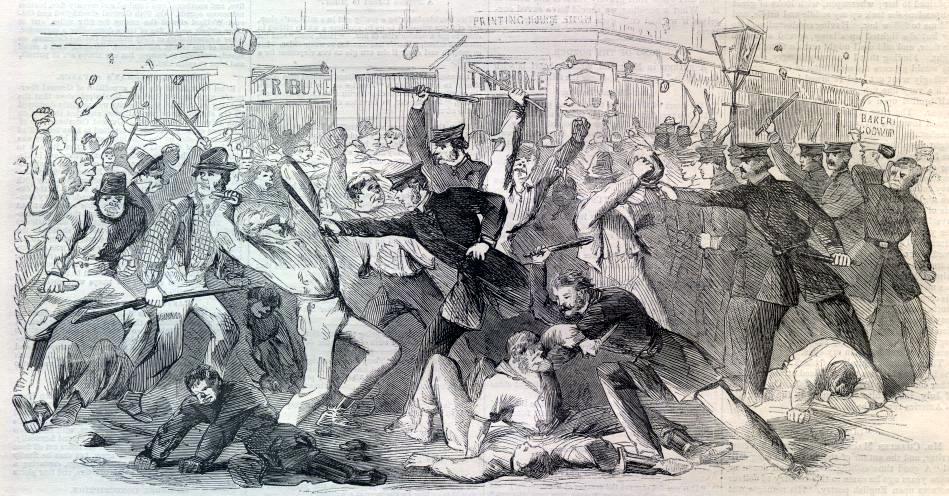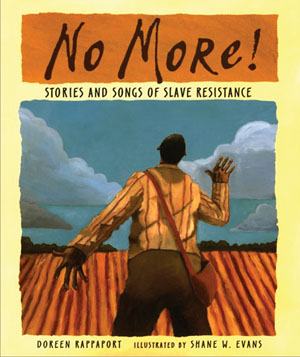Book — Non-fiction. By Howard Zinn. 2005, with a new introduction by Anthony Arnove in 2015. 784 pages.
Howard Zinn's groundbreaking work on U.S. history. This book details lives and facts rarely included in textbooks—an indispensable teacher and student resource.
Continue reading
Teaching Activity. By Bill Bigelow and Linda Christensen. Rethinking Schools. 3 pages.
Empathy, or "social imagination," allows students to connect to "the other" with whom, on the surface, they may appear to have little in common.
Continue reading
Teaching Activity. By Bill Bigelow. 7 pages.
A lesson to introduce students to the numerous and varied ways African Americans resisted their enslavement, using the autobiographical Narrative of the Life of Frederick Douglass.
Continue reading
Teaching Activity. By Bill Bigelow. 6 pages.
A lesson on the countless colonial laws enacted to create division and inequality based on race. This helps students understand the origins of racism in the United States and who benefits.
Continue reading
Student Handout. By Bill Bigelow. 3 pages.
This timeline can be used as a resource for lessons on the Civil War, President Lincoln, the 54th Regiment, and the end of slavery.
Continue reading
Teaching Activity. By Bill Bigelow. 7 pages.
Students explore some of the myths of the Civil War through examining excerpts from Lincoln’s first inaugural address, the rarely mentioned original Thirteenth Amendment to the Constitution that Lincoln promised to support, and the Emancipation Proclamation.
Continue reading
Teaching Activity. By Bill Bigelow. 9 pages.
Students are invited to solve a mystery, using historical clues, about the real story of the Draft Riots.
Continue reading
Book — Non-fiction. Edited by Yuval Taylor. 2005. 230 pages.
Ten individuals tell stories of their childhood and teenage years in slavery.
Continue reading
Book — Non-fiction. By James W. Loewen. 2018. 480 pages.
Provides a detailed critique of 12 leading high school history textbooks.
Continue reading
Picture book. By Doreen Rappaport. Illustrated by Shane W. Evans. 2005. 64 pages.
Picture book for upper elementary/middle school on the many forms of resistance to slavery.
Continue reading
Teaching Activity. By Gayle Olson-Raymer.
Questions and teaching ideas for Chapter 2 of Voices of a People's History of the United States on early American slavery, resistance, and rebellion.
Continue reading
Teaching Activity. By Alan J. Singer. Rethinking Schools. 7 pages.
How a teacher and his students organized a tour of the hidden history of slavery in New York.
Continue reading
Teaching Activity. By Thom Thacker and Michael A. Lord. Rethinking Schools. 4 pages.
An art contest is used as the basis from which students can examine primary historical documents (advertisements for runaway slaves) to gain a deeper understanding of the institution of slavery in the North.
Continue reading
Article. Background reading for teachers. By Bill Bigelow. 4 pages.
A review of Freedom's Unfinished Revolution, a collection of primary documents for high school on the Civil War and Reconstruction.
Continue reading
Teaching Activity. By Bill Bigelow. 12 pages.
A role play based on the election of 1860 allows students to explore the political debates of the time and the real reasons for the Civil War.
Continue reading
Teaching Activity. Lesson by Bill Bigelow and student reading by Howard Zinn. Rethinking Schools. 21 pages.
Interactive activity introduces students to the history and often untold story of the U.S.-Mexico War. Roles available in Spanish.
Continue reading
Teaching Guide. By Gayle Olson-Raymer. 17 pages.
Questions and teaching ideas for Chapter 9 of Voices of a People's History of the United States on black and white resistance to slavery before the Civil War.
Continue reading
Picture book. By Patricia Polacco. 1994. 48 pages.
The narrative of two young boys who meet and help each other during the Civil War. For upper elementary.
Teaching Activity by Patricia Polacco
Continue reading
Book — Non-fiction. By Howard Zinn, adapted by Rebecca Stefoff with additions by Ed Morales. 2022. 544 pages.
A young adult version of the best-selling A People’s History of the United States, ideal for 6th through 9th grade students.
Continue reading
Book — Non-fiction. By Virginia Hamilton. 2002. 160 pages.
An illustrated account of slavery for children based on historical records, personal narratives, and biographies for ages 8 - 12. Includes profiles of Harriet Tubman, Sojourner Truth, and Frederick Douglass.
Continue reading
Book — Non-fiction. Edited by Howard Zinn and Anthony Arnove. 2014. 704 pages.
Speeches, letters, poems, and songs for each chapter of A People's History of the United States.
Continue reading
Book — Non-fiction and CD. Edited by Ira Berlin, Marc Favreau, and Steven F. Miller. Foreword by Robin D.G. Kelley. 2007. 359 pages.
Oral histories of first-person accounts of slavery.
Continue reading
Book — Non-fiction. By Anne Farrow, Joel Lang and Jenifer Frank. 2005. 304 pages.
Challenges the misconception that only the South was involved in or profited from slavery.
Continue reading
Book — Non-fiction. By Alfred Blumrosen and Ruth Blumrosen. 2006. 304 pages.
A detailed account of the role slavery played in the Revolutionary War and the writing of the U.S. Constitution.
Continue reading
Website.
A companion site to the PBS documentary on the origins and legacy of American slavery, including episodes on the Revolutionary and Civil Wars.
Continue reading

























